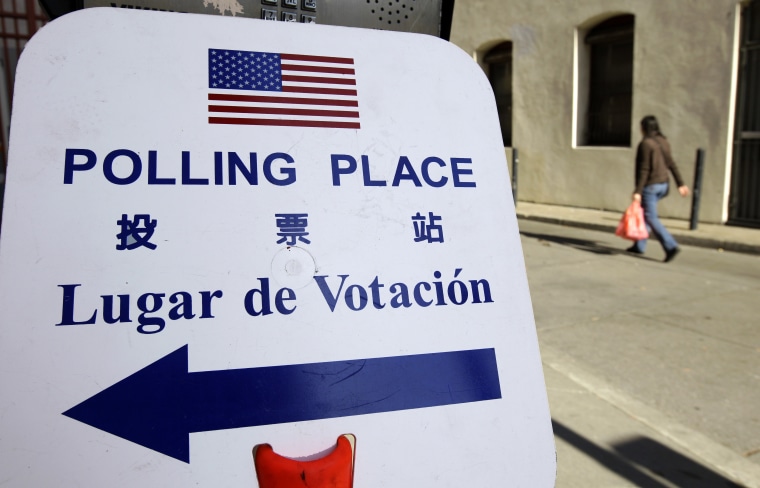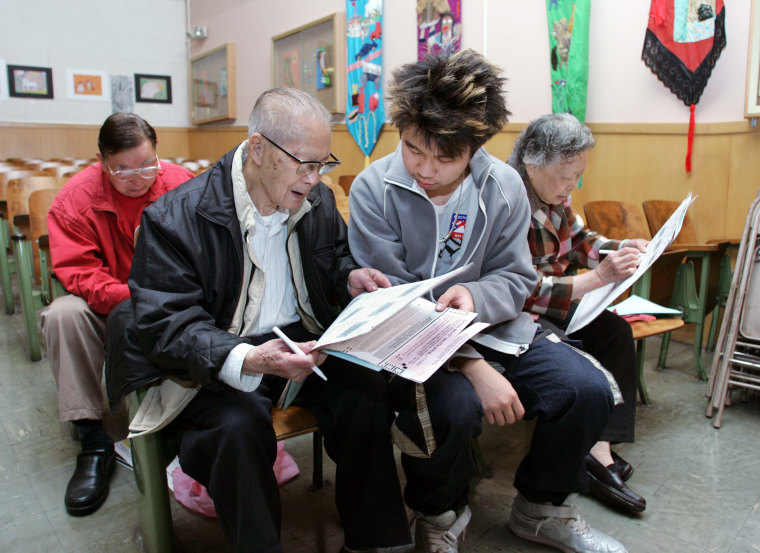Immigrant voters are increasingly seen as a key voting bloc, and this presidential election year is no exception. Yet what’s rarely discussed are the many hurdles that effectively prevent many immigrant voters from going to the polls, with the biggest barrier being access to voting materials and ballots in their native language.
Imagine you’re a newly registered immigrant voter from Bangladesh, or China, or Vietnam at the voting booth this November. It’s already taken years after coming to the United States to become a citizen. On Election Day, you’ve somehow found your polling place, despite the fact that every mailer you’ve received is only in English, a language you don’t read. You finally make it through the line, only to receive a ballot, again in English. You don’t know exactly who you’re voting for, or how to correctly fill it out. None of the poll workers speak your language, so they can’t offer any assistance.
Frustrating, right? Yet this is the reality that millions of Asian-American voters face when they contemplate casting a ballot during every election cycle.

At a time when voting rights are under attack in states around the country, the largest obstacle for many AAPI (Asian American and Pacific Islander) voters is perfectly legal. Language access is an issue that few outside the AAPI community are talking about, yet it’s one that makes a critical difference in whether Asian American voters come out to cast ballots. It’s widely noted that, out of all racial groups, Asian Americans are the least likely to register to vote as well as turn out on Election Day.
RELATED: Asian-American Population Surges, But Voter Turnout Still Lacks
While some turn to cultural reasons, the truth becomes clear when one actually asks registered voters why they don’t vote. In 2012, eight percent of AAPI registered voters who are limited English proficient and didn't cast a ballot cited that it was language barriers that prevented them from voting, and the advocacy group Asian Americans Advancing Justice found that turnout was nine percent lower for voters who aren’t comfortable speaking or reading English when compared with the rest of the electorate.
"In a year when the votes cast by immigrant voters are projected to be the margin of victory in states around the country, it’s time we talk about language access."
When almost two-thirds of Asian-American eligible voters are immigrants, a large number of whom prefer to read, write, and speak their native language, having translated election materials and ballots makes all the difference.
Yet there is a critical translation need that isn’t addressed by our existing laws, systems, or infrastructure. When the Voting Rights Act was passed in 1965, Asian Americans made up a minuscule 0.5 percent of the country’s population, with the vast majority living in Hawaii and in cities on the East and West Coasts.
A decade later in 1975, Congress amended the Voting Rights Act by adding Section 203 mandating bilingual ballots in certain districts where five percent of the population speaks a language other than English, reflecting the reality that, due to language barriers, Latinos, Asian Americans, and Native Americans in particular “have been effectively excluded from participation in the electoral process.”
Yet despite this amendment, and subsequent additions, our laws and institutions haven’t been able to keep pace with the incredible growth and change in the Asian-American population. The AAPI population in the U.S. grew by almost 50 percent between 2000 and 2010, with some of the most rapid growth in key swing states like Nevada, Virginia, and North Carolina.

Today, there are more than 20 million Asian Americans who live in cities and states all around the US, speaking more than 100 distinct languages and dialects — yet only 11 states have counties or cities that, under the mandate of the Voting Rights Act, are required to provide election materials in at least one Asian language. This list, however, doesn’t include most of the states that have the fastest-growing AAPI populations.
RELATED: Can This New App Help More Asian Americans Vote in 2016?
History shows that when Asian-American voters have access to in-language materials, participation in our democratic process increases dramatically. In Harris County, Texas, the turnout in Vietnamese-American voters doubled once the county began abiding by the language-access provisions of the VRA.
In a year when the votes cast by immigrant voters are projected to be the margin of victory in states around the country, it’s time we talk about language access. Not only must we fight back against the gutting of key provisions of the Voting Rights Act as well as expand its language access provisions, we also need to create community-based solutions that step in to assist AAPI voters that are currently being de facto excluded from casting a ballot this election season. That’s why, at 18MillionRising.org, we created VoterVOX, an online tool that connects immigrant voters to volunteers who work with them to translate and fill in ballots.
All of this is necessary in order to finally make our democracy accessible, in every language, for every voter.
Cayden Mak is the Interim Executive Director at 18MillionRising.org.
Follow NBC Asian America on Facebook, Twitter, Instagram, and Tumblr.